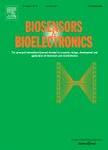版权所有:内蒙古大学图书馆 技术提供:维普资讯• 智图
内蒙古自治区呼和浩特市赛罕区大学西街235号 邮编: 010021

作者机构:Tecnol Monterrey Sch Engn & Sci Ave Eugenio Garza SadaNL 2501 Sur Monterrey 64849 Mexico Univ Calif Irvine Dept Mech & Aerosp Engn Irvine CA 92697 USA
出 版 物:《BIOSENSORS & BIOELECTRONICS》 (Biosens. Bioelectron.)
年 卷 期:2025年第272卷
页 面:117099页
核心收录:
学科分类:0710[理学-生物学] 071011[理学-生物物理学] 07[理学] 0805[工学-材料科学与工程(可授工学、理学学位)] 0703[理学-化学] 0836[工学-生物工程]
基 金:CONAHCYT [CVU:969467] FEMSA foundation Federico Baur Endowed Chair
主 题:Electrochemical sensor Convection Vibration Hydrodynamic flow Microfluidics
摘 要:Electrochemical sensors are part of a diverse and evolving world of chemical sensors that are impacted by high demand and ongoing technological advancements. Electrochemical sensors offer benefits like cost-efficiency, short response time, ease of use, good limit of detection (LOD) and sensitivity, and ease of miniaturization while providing consistent analytical results. These sensors are employed in various fields-such as healthcare and diagnostics, environmental monitoring, and the food industry-to detect bacteria, viruses, heavy metals, pesticides, and more. In this review, we provide a comprehensive overview of electrochemical sensing techniques, with a focus on enhancing sensor performance through the integration of vibration and hydrodynamic flow in microfluidic systems. We present a structured comparison of these methods, utilizing tables to highlight the approaches most effective for performance enhancement. Additionally, we classify various electrochemical sensing applications, offering insights into the practical utilization of these two techniques for lowering the LOD. Finally, we present a comparative analysis of relevant studies, highlighting how hydrodynamic flow and vibration impact the sensing mechanism. We also explore the potential of these techniques to facilitate the development of automated, high-throughput microfluidic platforms, thereby optimizing their functionality and efficiency.